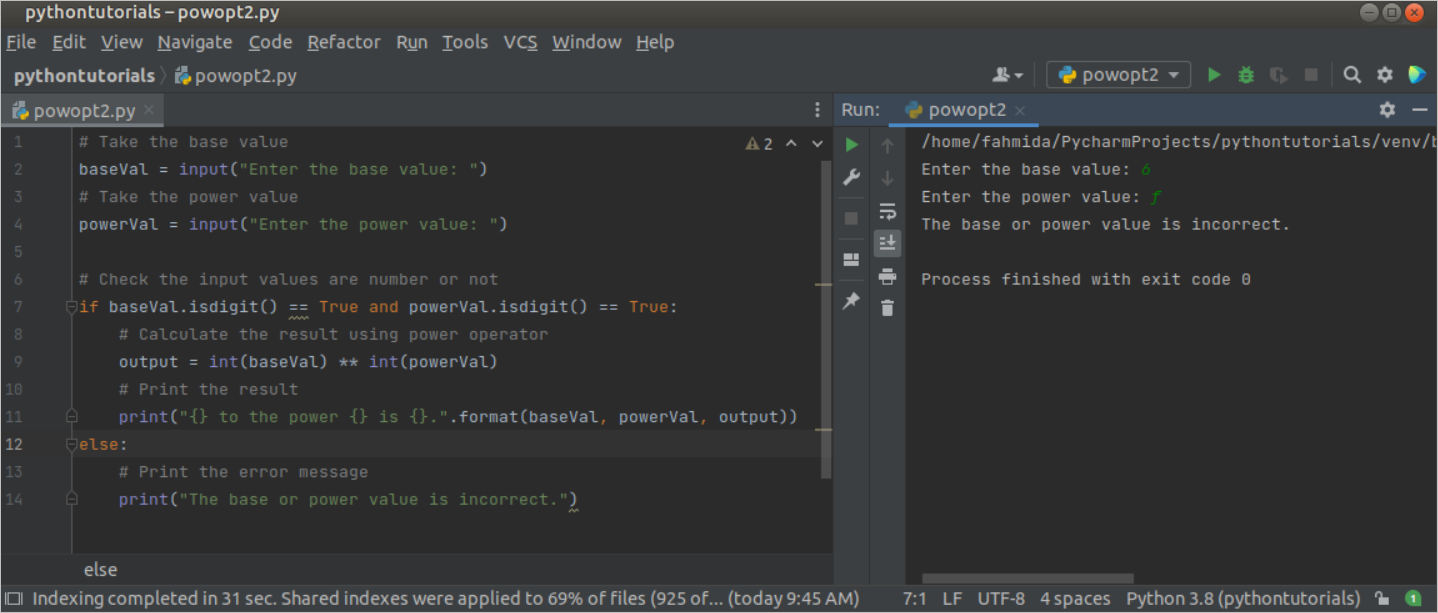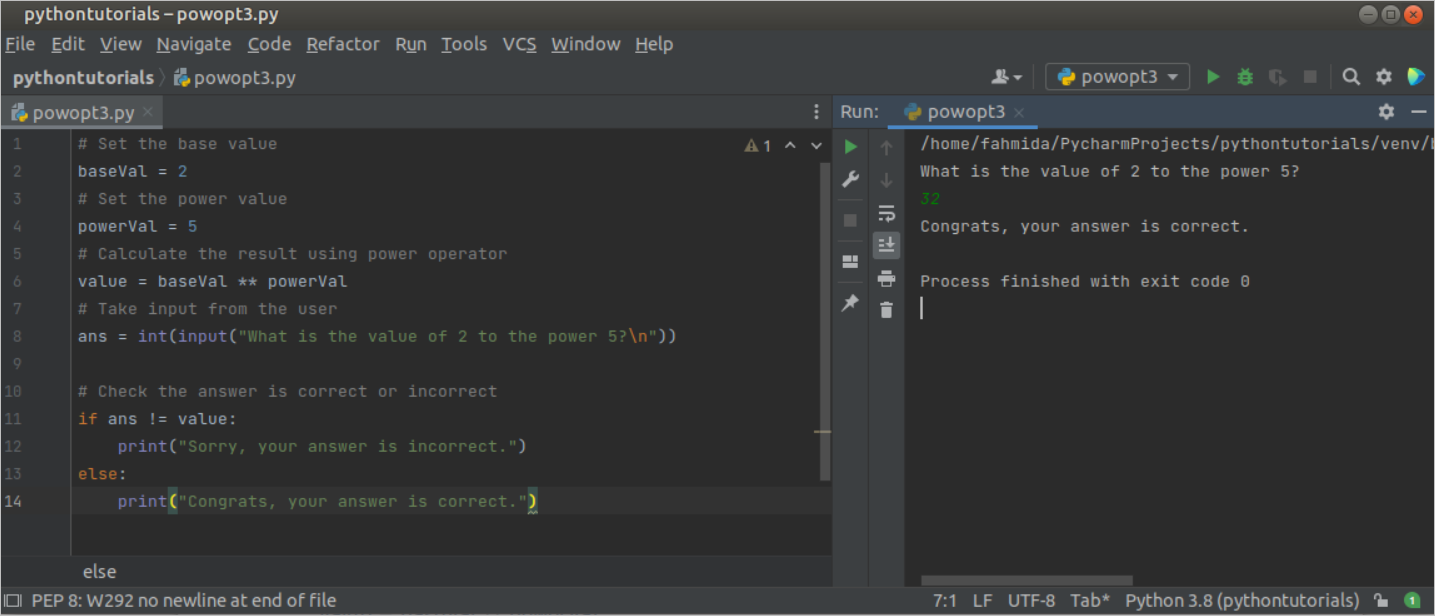Use Power Operator in Python:
The power operator is defined by the ‘**’ symbol. It is used between the base and the power values. If the base value is defined by x and the power value is defined by n, then the power operator is used in the following way to calculate the xn.
Power Operator Examples:
Different uses of power operators in python have been shown in this part of the tutorial.
Example-1: Simple use of power operator
Create a python file with the following script to check the use of the power operator to calculate 34 in python. Here, the base value is set to 3, and the power value is set to 4. Next, the output of the 34 has been printed.
baseVal = 3
# Set the power value
powerVal = 4
# Calculate the result using power operator
output = baseVal ** powerVal
# Print the result
print("{} to the power {} is {}.".format(baseVal, powerVal, output))
Output:
The following output will appear after executing the above script.
Example-2: Calculate the power with error handling
Create a python file with the following script to take base and power values from the user and calculate the power value after validating the input values. The isdigit() function has been used in the script to check the validity. The isdigit() function will return True for the valid base and power values. The error message will be printed if the base or power value is invalid.
baseVal = input("Enter the base value: ")
# Take the power value
powerVal = input("Enter the power value: ")
# Check the input values are number or not
if baseVal.isdigit() == True and powerVal.isdigit() == True:
# Calculate the result using power operator
output = int(baseVal) ** int(powerVal)
# Print the result
print("{} to the power {} is {}.".format(baseVal, powerVal, output))
else:
# Print the error message
print("The base or power value is incorrect.")
Output:
After executing the above script for the valid data, the following output will appear. Here, 4 is the base value, and 3 is the power value.
After executing the above script for the invalid data, the following output will appear. Here, 6 has been given as the base value, and ‘f‘ is the invalid power value.
Example-3: Testing user answer using power operator
Create a python file with the following script to check the answer taken from the user is correct or incorrect by using the power operator. The answer of the 25 will be asked to the user after executing the script. The answer to this question has been calculated by using the power operator in the script. Next, the calculated value and the answer given by the user will be checked, and the appropriate message will be printed based on the returned value of the ‘if’ statement.
baseVal = 2
# Set the power value
powerVal = 5
# Calculate the result using power operator
value = baseVal ** powerVal
# Take input from the user
ans = int(input("What is the value of 2 to the power 5?\n"))
# Check the answer is correct or incorrect
if ans != value:
print("Sorry, your answer is incorrect.")
else:
print("Congrats, your answer is correct.")
Output:
The following output will appear after executing the above script if the answer given by the user is correct.
The following output will appear after executing the above script if the answer given by the user is incorrect.
Conclusion:
The uses of power operators based on pre-defined or input values have shown in this tutorial by using simple python scripts.





